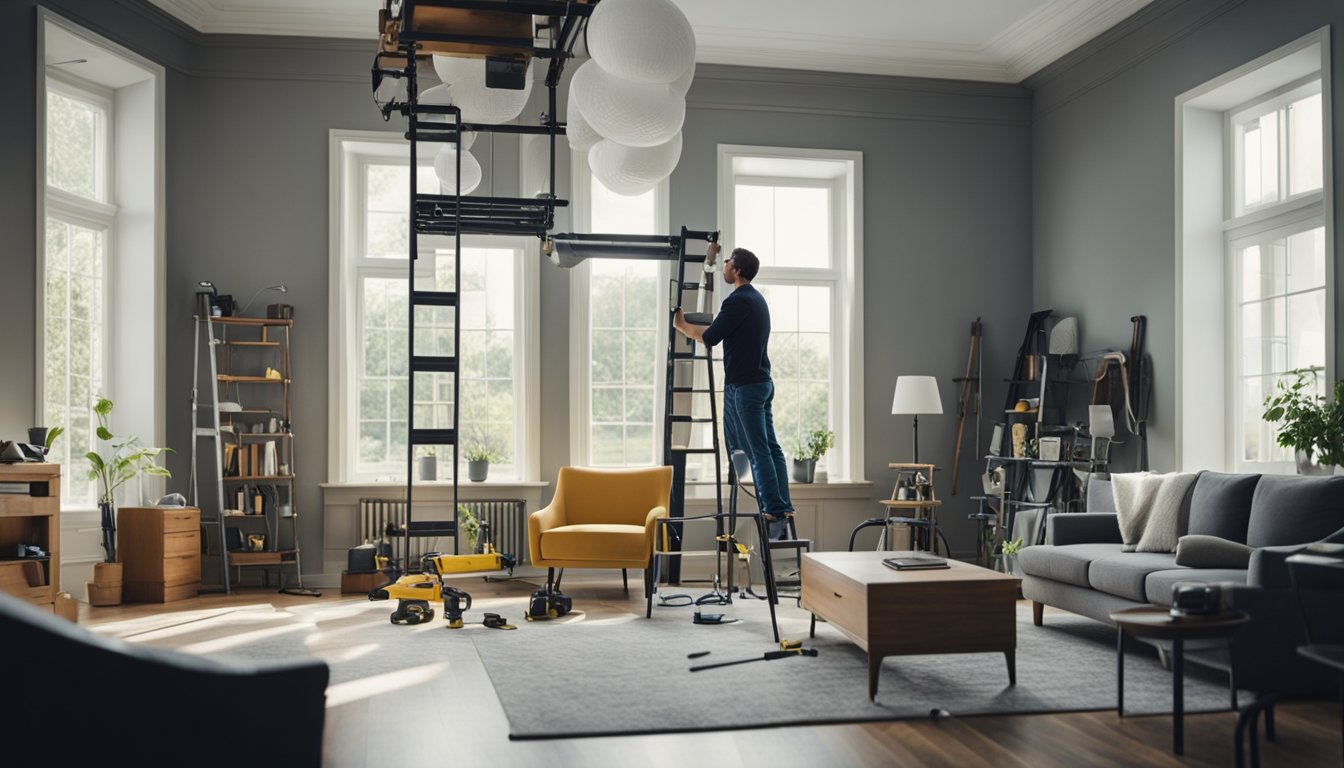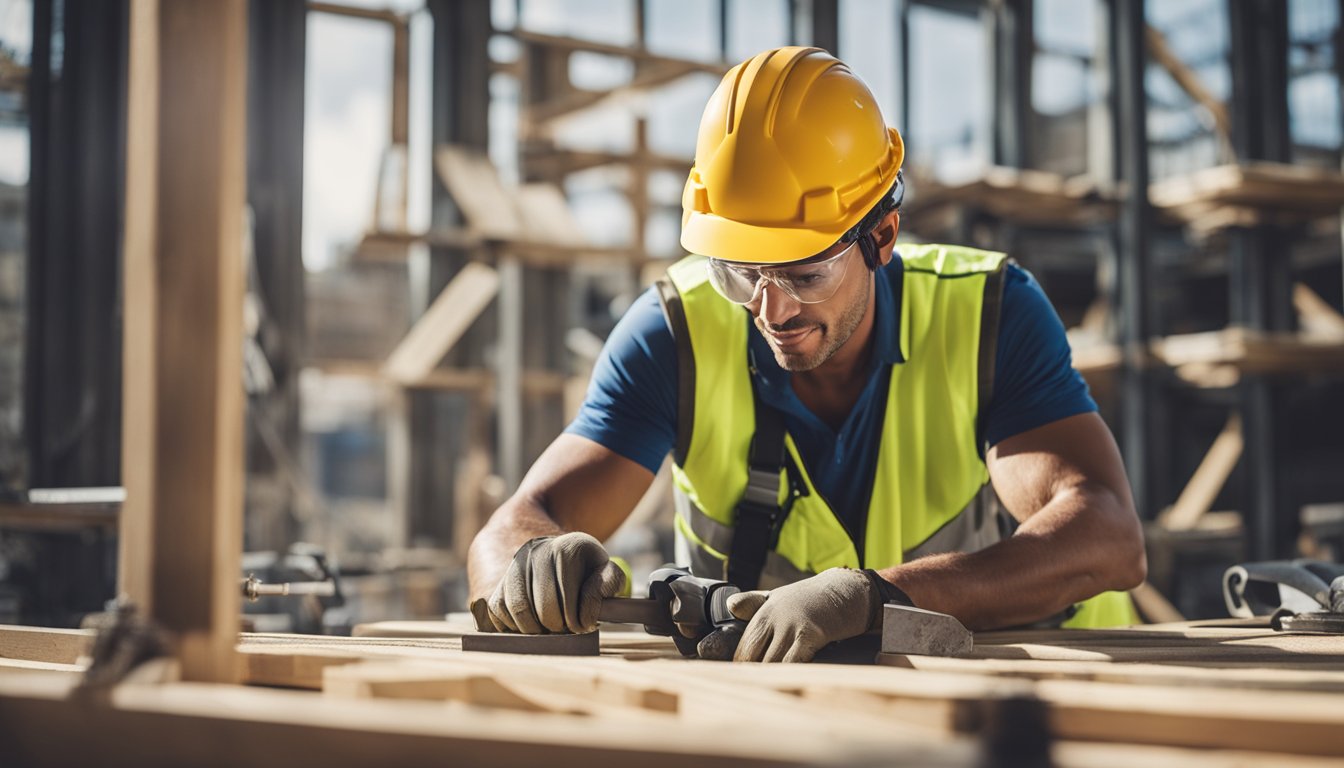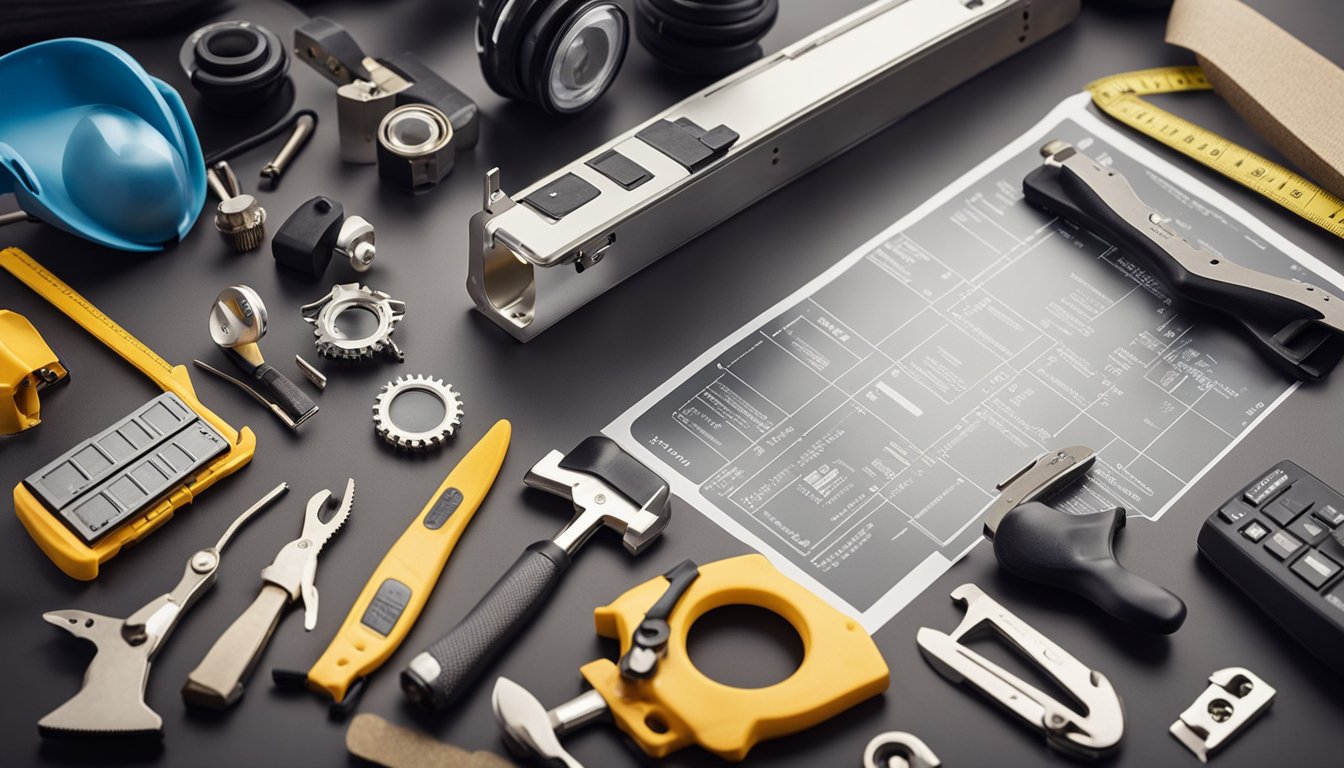Late updated: 15 Oct 2024 08:10
Written by: Daniel Harper
Modern Techniques For Safe Home Renovations: Essential Tips and Tools
Home renovation brings the promise of a transformative living space, but it is crucial to navigate the process with an eye on safety. Integrating modern techniques ensures not only a stylish upgrade but also a secure environment for all involved. As awareness around construction safety increases, the incorporation of precautionary measures is more essential than ever. From strategic planning to the thoughtful execution of key steps, a meticulous approach can mitigate risks.

We pride ourselves on harnessing contemporary methods that align with safe renovation practices. Prioritising safety does not mean compromising on design or functionality; instead, it enhances the renovation process, protecting everyone while achieving stunning results. Smart technologies and innovative materials are now spearheading the charge, offering new ways to renovate without jeopardising safety standards.
Renovations, while exciting, come with their unique set of challenges and hazards. The right strategies empower homeowners to create beautiful spaces without unnecessary risk. With a keen focus on efficient planning and the adoption of cutting-edge tools, we can transform any home safely and effectively.
Key Takeaways
- Planning carefully ensures a safe and successful renovation.
- Modern techniques improve both design quality and safety.
- Effective execution minimises renovation risks.
Planning Your Renovation
In preparing for a home renovation, it's crucial to define the project's scope and assess potential costs and financing routes. Creating mood boards enriches the design phase, helping align visions and goals.
Assessing the Scope of Your Project
We begin by evaluating what our renovation entails. Whether it’s a cosmetic update or structural change, understanding the full extent of the work is essential. Is it just the kitchen, or does it involve multiple rooms?
Identifying the specific areas needing attention helps in planning and avoiding scope creep. Should we consider an open floor plan for more space, or is a bathroom facelift enough? Clarity on this stops unnecessary changes and missteps.
Considering temporary living arrangements during the renovation is also crucial. If the project disrupts daily living, exploring offsite options or rearranging our living space becomes necessary. A well-defined plan makes the renovation smoother and more predictable.
Budgeting and Financing
Defining our budget is as important as the renovation itself. Estimating the costs involves factoring in materials, labour, and unforeseen expenses. We must ask ourselves, do we have enough funds, or do we need additional financial support?
Exploring financing options, such as home improvement loans or refinancing, offers flexibility. Each option has its pros and cons, so it’s wise to consult with financial experts to find what suits us best.
Keep track of expenses using a detailed spreadsheet. This allows us to accommodate any unexpected costs without derailing the entire project. Staying financially organised ensures we stick to our budget and achieve our renovation goals.
Design Inspirations and Mood Boards
We can start the design process by gathering inspirations that align with our tastes and renovation aims. Are we envisioning a modern minimalist interior or a cosy rustic vibe?
Using a mood board to compile colour schemes, furniture, and layouts assists in visualising the end product. It's a tool for coordinating ideas between homeowners and designers, ensuring everyone shares the same vision.
From magazines to online platforms, a variety of sources offer exciting ideas. Tailoring these inspirations to our specific project is key, transforming concepts into tangible designs that reflect our style and plan.
Executing Your Renovation Safely

Executing a safe home renovation involves careful planning and attention to detail. Key components include ensuring structural stability during demolition, safely upgrading electrical systems, selecting appropriate materials, and installing essential safety measures like smoke and carbon monoxide detectors.
Demolition and Structural Work
Demolition is often the first step in a renovation project. We must ensure the building's structural integrity is maintained. Before knocking down any walls or removing fixtures, it's crucial to have a detailed plan. This involves consulting with structural engineers or experienced contractors to understand load-bearing walls and potential risks.
Safety gear, such as hard hats, gloves, and protective eyewear, should always be worn. Ventilation must be good to mitigate dust and particulate matter. Additionally, having a first aid kit readily available can help manage minor injuries during demolition. Hiring professionals for complex tasks, like asbestos removal, is essential to avoid hazardous exposures. These precautions not only safeguard our health but also ensure long-term stability and safety of our home remodel.
Electrical and Plumbing Upgrades
When upgrading electrical and plumbing systems, safety is paramount. Only certified professionals should handle electrical work to prevent risks like fires or electrocution. Installing energy-efficient appliances not only benefits the environment but also enhances safety due to their modern safety features. Smoke detectors and carbon monoxide detectors should also be installed to provide early warnings of potential hazards.
Plumbing upgrades, such as those in a bathroom renovation, must ensure leak prevention and proper installation to avoid future water damage. It’s wise to focus on functional placement of features and fixtures, ensuring easy access for maintenance. Regular inspection of these systems is recommended to spot any issues early. These undertakings not only improve functionality but also significantly raise the safety standards of our living space.
Choosing Materials and Appliances
Selecting the right materials and appliances plays a significant role in safe renovations. The use of reclaimed wood can add character while being eco-friendly. Similarly, energy-efficient appliances enhance both safety and functionality. It's important to choose materials that are durable and meet safety standards.
Opt for low-VOC paints and finishes to improve indoor air quality. During a kitchen remodel, choosing non-slip flooring can prevent accidents. Additionally, integrating smart home technology can enhance safety by providing remote monitoring and control over appliances and systems. The choice of quality materials and appliances not only increases safety but also boosts the aesthetic and functional value of our home improvement projects.
Installing Safety Measures
Implementing safety measures is a non-negotiable part of any renovation. We should prioritise installing fire extinguishers and ensure they are easily accessible in key areas like the kitchen. Smoke detectors and carbon monoxide detectors save lives and should be tested regularly.
Deadbolts on all exterior doors enhance security, while in-room sensors improve emergency response times. Air filters are crucial for maintaining clean air, especially after a remodel. Smart systems offer convenient monitoring and alerts. With these measures in place, we not only safeguard our home renovations but also streamline protection for our family and belongings.
Frequently Asked Questions

In the realm of home renovations, safety and planning are paramount. Navigating the intricacies of maintaining mental well-being, adhering to regulations, and effectively managing projects is essential. Here, we address common inquiries to provide clarity and guidance for safe and efficient home transformation.
What measures should one prioritise for ensuring safety during home refurbishments?
Prioritising safety during renovations requires a well-thought-out plan. We should identify potential hazards and implement protective measures, such as setting up barricades to prevent access to risky areas. Equipping ourselves with appropriate safety gear is crucial to safeguard against accidents and injuries during the refurbishment process.
How does one plan a renovation project when residing in the property?
Living on-site during a renovation necessitates meticulous planning. A clear timeline helps us minimise disruptions and maintain a semblance of normalcy. It's wise to create designated living zones away from active work areas, ensuring that necessary facilities remain accessible throughout the renovation period.
What strategies can maintain mental well-being throughout the course of home improvements?
Renovations can be taxing on mental health. To alleviate stress, we recommend setting realistic expectations and maintaining open communication with contractors. Regularly taking short breaks and finding time to relax away from the construction noise can help us stay refreshed and focused.
What constitutes an effective strategy for managing a comprehensive home overhaul?
Managing a complete home overhaul requires strategic planning and organisation. We should break down renovations into manageable phases and allocate sufficient time for each stage. Hiring qualified professionals and arranging regular check-ins will ensure that the project stays on track and any issues are swiftly addressed.
What precautions are essential to consider for a safe and efficient home remodelling?
An efficient remodelling project necessitates adherence to safety protocols and efficient use of resources. Prioritising the use of high-quality materials can prevent structural failures and future repairs. We find that maintaining a clean and organised worksite mitigates risks and contributes to a smoother workflow.
How does one ensure compliance with the latest building regulations during property renovations?
Staying informed about current building regulations is critical. Consulting with local authorities and obtaining necessary permits prevents potential legal issues. Collaborating with licensed professionals ensures that renovations meet the required standards, facilitating a smooth and compliant renovation process.
